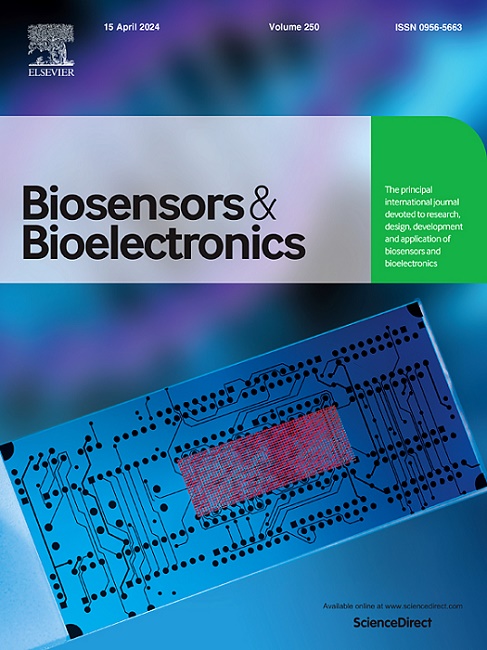Droplet pairing-merging enabled digital RPA-CRISPR/Cas12a (DIMERIC) assay for rapid and precise quantification of Hepatitis B Virus DNA
IF 10.7
1区 生物学
Q1 BIOPHYSICS
引用次数: 0
Abstract
Recombinase polymerase amplification (RPA)-CRISPR/Cas12a assays have demonstrated remarkable potential for point-of-care detection of pathogens in resource-limited settings. Nevertheless, these assays fall short in delivering direct quantitative results due to the incompatibility between the RPA and CRISPR/Cas12a systems. To overcome this limitation, we developed a droplet pairing-merging enabled digital RPA-CRISPR/Cas12a (DIMERIC) assay in this study. By leveraging a microfluidic chip with a calabash-shaped microwell array, large-volume RPA droplets and small-volume CRISPR/Cas12a droplets were sequentially and size-selectively trapped, generating one-to-one droplet pairs. This spatial separation of the droplets eliminates the inhibitory effects of the CRISPR/Cas12a chemistry on RPA. Upon the completion of RPA, the CRISPR/Cas12a system can be activated by merging the paired droplets. This temporal separation of the RPA and CRISPR/Cas reactions allows for the accumulation of sufficient amplicons to efficiently unleash the collateral cleavage activity. The DIMERIC assay offers rapid quantification of nucleic acids, with the entire procedure being accomplished within 20 min. This assay was employed for the quantitative detection of Hepatitis B virus DNA from batched clinical serum samples, demonstrating a good correlation with qPCR (R2 = 0.92033) and ddPCR (R2 = 0.97337) outcomes. Consequently, the developed DIMERIC assay provides a valuable tool for rapid and precise quantification of pathogenic nucleic acids.
求助全文
约1分钟内获得全文
求助全文
来源期刊

Biosensors and Bioelectronics
工程技术-电化学
CiteScore
20.80
自引率
7.10%
发文量
1006
审稿时长
29 days
期刊介绍:
Biosensors & Bioelectronics, along with its open access companion journal Biosensors & Bioelectronics: X, is the leading international publication in the field of biosensors and bioelectronics. It covers research, design, development, and application of biosensors, which are analytical devices incorporating biological materials with physicochemical transducers. These devices, including sensors, DNA chips, electronic noses, and lab-on-a-chip, produce digital signals proportional to specific analytes. Examples include immunosensors and enzyme-based biosensors, applied in various fields such as medicine, environmental monitoring, and food industry. The journal also focuses on molecular and supramolecular structures for enhancing device performance.
 求助内容:
求助内容: 应助结果提醒方式:
应助结果提醒方式:


